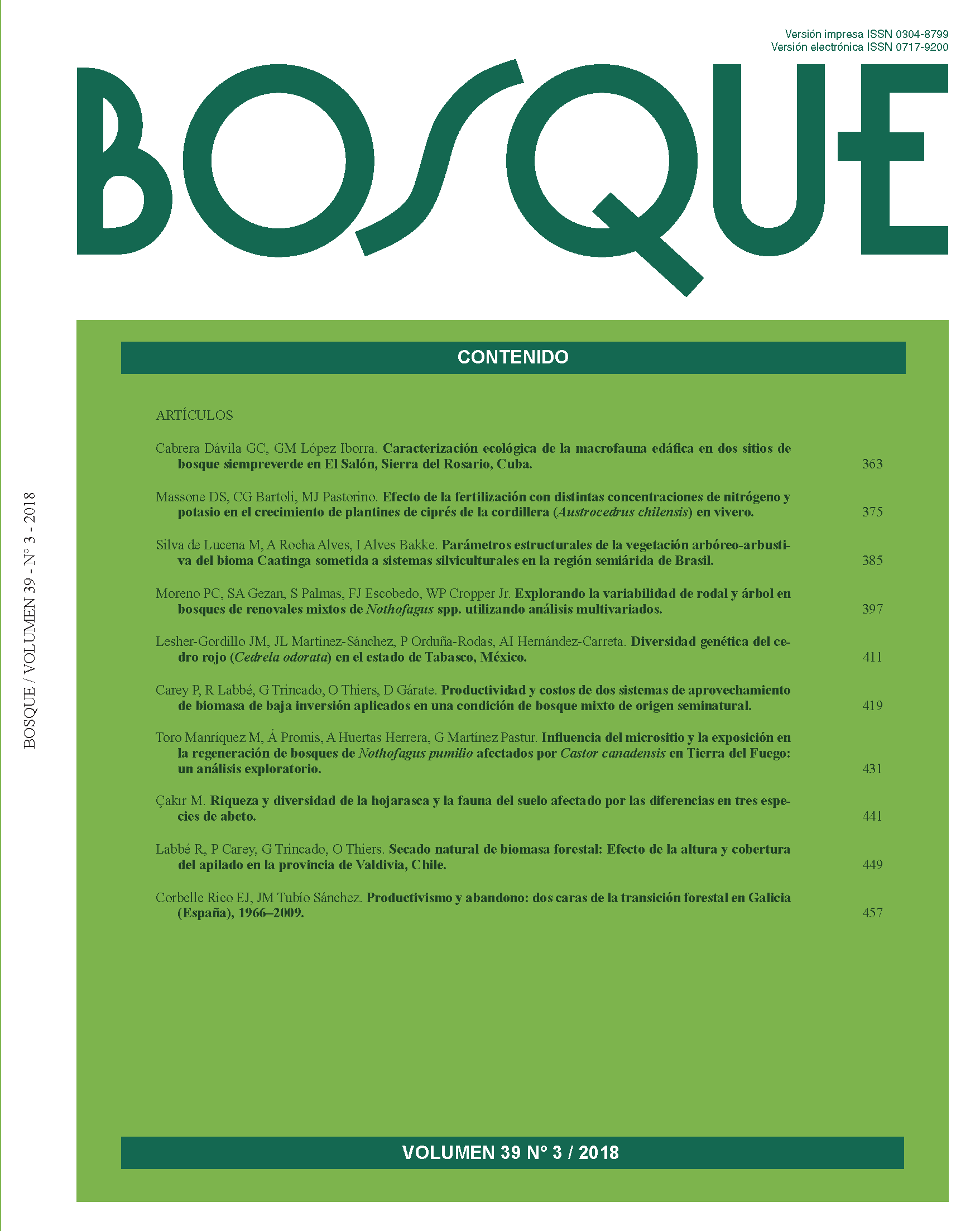Exploring stand and tree variability in mixed Nothofagus second-growth forests through multivariate analyses
Main Article Content
Abstract
Second-growth forests of Nothofagus obliqua (roble), N. alpina (raulí) and N. dombeyi (coihue), known locally as RO-RA-CO forest type, are among the most important natural mixed forest types of Chile. Several studies have identified a wide range of factors that could influence both stand and tree variability found in these forests. To better characterize potential tree- and stand-level factors that are associated with RO-RA-CO variability, and that are available in typical forest inventories, several unsupervised multivariate statistical methods were evaluated: 1) non-metric multidimensional scaling (NMDS); 2) principal coordinates analysis (PCoA); and 3) principal component analysis (PCA). The data used in this study originated from a sample of 158 plots consisting of two plot networks that covered the full geographic area of the RO-RA-CO forest type in Chile. We found that site productivity and growth zones did not explain the differences within the sampled population. However, stand development stages, tree-to-tree competition, and tree-size attributes were critical variables with a high percentage of variance explained using PCA, ranging from 61 % to 67 %. In addition, for the PCoA analysis, the variable stand density is important, with ~78 % variance explained.

